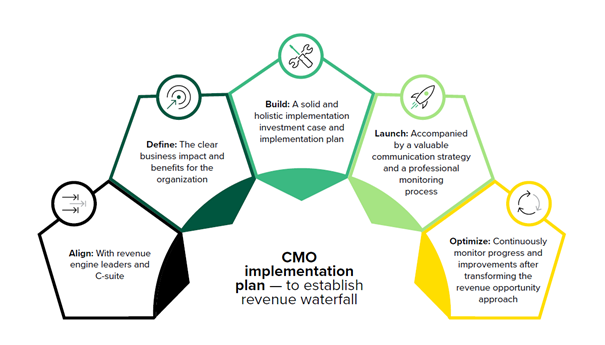CMOs’ Role In Unveiling The Full Potential Of Revenue Opportunities
The environment of B2B organizations and B2B marketing is changing rapidly, and it’s essential that companies keep up to stay ahead of the game. One area that needs attention is revenue management, which traditionally focused solely on lead-centric acquisition processes. As customer buying behavior changes, however, B2B organizations and their CMOs must take a more holistic view of revenue opportunities and adapt their revenue management practices accordingly.
Why is it essential to move beyond lead-centric revenue management processes?
- The role of marketing in B2B has expanded, and companies are moving away from one-off sales and perpetual licenses to everything-as-a-service models. This shift enables marketers to place a greater focus on recurring revenue from existing customers, which is more complex and requires data-driven strategies to optimize revenue opportunities across the customer lifecycle.
- Revenue does not come solely from net-new acquisitions. Lead-centric revenue management processes can overlook cross- and upsell opportunities with existing clients. To address this, the Forrester B2B Revenue Waterfall offers a holistic view of revenue opportunities, considering the diverse range of paths that can lead to increased revenue and company goals.
- The buying process is becoming more complex, and a successful outcome requires multiple buyers and numerous interactions per buyer. B2B marketers must therefore track and manage buying groups, not just individual leads, through the buying process. This requires relevant technology and data management strategies that foster continuous improvement of targeting efforts and optimize buying group engagement.
- B2B marketing leaders must show marketing’s value — including cost-efficiency and effectiveness — across the entire revenue process. An opportunity-based waterfall allows CMOs to expand performance measurement systems to account for the impact that marketing efforts create beyond acquisition.
How can B2B organizations and B2B marketing drive these key benefits?
The Forrester B2B Revenue Waterfall provides CMOs and their stakeholders with insights to plan and measure the progress of the full spectrum of B2B opportunity types (e.g., cross-sell, upsell). Implementing the B2B Revenue Waterfall drives strong alignment and provides CMOs with several benefits:
- Higher return on marketing efforts achieved by establishing pre-sales stage opportunities including all known buying group members and qualifying opportunities before passing them to sales
- Buying groups and opportunity orientation, driving the development of deeper insights into the buying group and strengthening the alignment of marketing activities
- A holistic view of all opportunity types, ensuring that marketing’s contribution and value is visible to all levels of the business
- Emphasis on high-priority areas to accelerate revenue and monitoring each distinct stage within the opportunity process
- A consolidated and shared revenue management model establishing the B2B Revenue Waterfall as the single source of truth for opportunity pipeline and revenue management across sales, product, revenue development, and marketing
B2B marketers and their organizations must adapt their revenue management practices to keep up with changing customer buying behavior. The B2B Revenue Waterfall offers a holistic approach to revenue management, driving higher returns on marketing efforts, deeper insights into buying groups, a consolidated revenue management model, and common cross-functional language. By adopting the B2B Revenue Waterfall, B2B organizations can accelerate revenue growth, optimize customer engagement, and demonstrate marketing’s value across the entire revenue process.
To establish the waterfall in their organization, CMOs must follow a structured implementation plan that consists of five components (see figure below):
- Implementing a holistic revenue opportunity approach impacts the entire organization. CMOs must align with revenue engine leaders, sales, product, and the C-suite. Their commitment and clearly defined ownership are prerequisites to transforming the revenue waterfall.
- Evaluate business impact and operational readiness. Instead of implementing the waterfall as a whole, identify and prioritize less-complex pilot projects (e.g., focusing on a region or a business unit) for implementation to avoid revenue risks.
- To ensure a proper preparation and build phase, do foundational work — e.g., a granular implementation investment plan; consideration of systems, people, and process requirements; a solid implementation plan with timelines and milestones; and an enablement plan to support stakeholders.
- In this phase, B2B CMOs must foster communication with all relevant stakeholders. A monitoring process with robust KPIs is crucial to achieve transparency about performance and test outcomes.
- To ensure continuous learning and optimization, define a set of relevant KPIs, establish a structured monitoring process, and share insight with the entire organization to ensure improvement.

